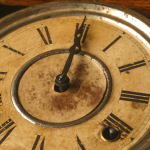Weekly Wrap Volume 101
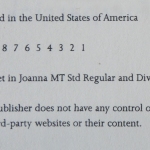 Why Do Books’ Copyright Pages Have 1 2 3 4 5 6 7 8 9 10?
Why Do Books’ Copyright Pages Have 1 2 3 4 5 6 7 8 9 10?
The number line, or printer’s key, often seen on the copyright page of books is simply a method of record-keeping that helps identify the book’s printing and, for some, year of printing a specific book, which may or may not be different than the original copyright date listed elsewhere on the page. Common examples of these number lines include: 1 2 3 4 5 6 7 8 9 10 or 2 3 4 5 6 93 92 91 90 or 3 4 5 6 7 8 9 10 MPC 19 18 17 16 or even 1 3 5 7 9 10 8 6 4 2. While different publishers use different conventions for these number lines, generally speaking, the smallest number in the line indicates a books printing. So if 1 2 3 4 5 6 7 8 9 10 is at the bottom of the page…(more)
Pretty much everyone knows that if you’re asked to pass something clockwise around a table, you hand it to the person on your left because that is the same direction that the hands of a clock move. But what you may not know is that this standard direction is a function not only of timekeeping, but the Earth’s rotation and the happy accident that much of human civilization evolved in the Northern Hemisphere. If you could look directly at the North Pole from space, it would appear to spin counterclockwise. Given that spin, when a stick is placed in the ground parallel to the Earth’s axis in, say, Egypt, the shadow cast by the stick as the Sun moves across the sky will move in a clockwise direction (notably, a similarly placed stick in Australia would cast…(more)
 What Causes Dark Circles Under Your Eyes?
What Causes Dark Circles Under Your Eyes?
It is often claimed that periorbital dark circles are caused by tiredness or working too hard or even just staying up late. While this can be true, the truth is that your genes play a huge role here. So what exactly is happening when you get dark circles under or around your eyes? Simply put, periorbital dark circles are a result of the thin layer of skin below your eyes showing the blood vessels and the blood they contain more clearly than anywhere else on your body. (For reference, this skin around your eyelids, called periorbital skin, is on average about 0.5 mm thick compared to an average of about 2 mm thick on most of the rest of your body.) Now, as you may or may not already know, the reason veins often look blue isn’t because the blood inside them is blue; it’s because…(more)
This Week’s YouTube Videos (Click to Subscribe!!)
- What Is The Hottest Temperature Possible
- 10 Amazing Facts #21
- Why Calico Cats are Almost Always Female
- Why are Bureaucratic Obstacles Referred to as “Red Tape”?
- Why Are Boxing Rings Called Rings (when they are actually square)?
- The Year’s Free Wages that lead to To Kill A Mockingbird
- The Longest Ever SNIPER KILL
Bonus Quick Facts
- There is a so-called Double-Nosed Andean Tiger Hound “breed” of dog (not officially recognized as a breed) that, as the name suggests, has a split nose. It’s generally thought that these dogs probably descend from the Pachón Navarro breed, which has a much less pronounced split nose. These were brought to the Americas by Spanish explorers sometime in the 16th century.
- The Brothers Grimm didn’t just write fairy tales, they also worked for many years on a German dictionary that not only included the definitions of the words, but also the origin of each word. As you might expect, this was a monumental undertaking for just two people who lacked Google. They did not manage to finish their dictionary before dying, but did publish excerpts of the work, with the first installment published in 1852, 14 years after they’d started it.
- The slinky was invented by accident when its creator, marine engineer Richard James, was working at a shipyard designing a device to measure horsepower output on naval battleships. The device required special springs for stabilization, one of which James accidentally knocked off his desk. It fell on a pile of stacked books and then continued on to the floor in slinky-like fashion. After playing around with it a bit, Richard thought this would make a good toy and got a loan to have several hundred slinkies made and packaged. He then managed to get his invention on the shelves of a local store… No one bought any for several days. Things changed when he went to the store and demonstrated the toy to people as they shopped, resulting in the whole stock selling out within two hours. And the rest, as they say, is history.
- Since 1968 when Senator George Murphy began widely offering candy to other U.S. Senators who passed his desk in the Senate Chamber, a “candy desk” has been maintained for just this purpose in the Senate, with various senators since then manning the post of supplying candy to any senators that want some. As to what type of candy the desk is kept stocked with, this has varied over time, initially depending on the tastes of the senator who sat at the desk, and later the candy being donated by various companies. For instance, Hersey, which is headquartered in Pennsylvania, supplied over 100 pounds of their product per year for the desk when Rick Santorum of Pennsylvania sat there. The existence of the candy desk did not become publicly known until Senator Slade Gorton announced in a 1985 press release that he was now manning the candy desk and intended to continue the tradition.
- Thanks to the Canadian Competition Act, Canadians who win a contest that isn’t one of the provincial lotteries, not run by a government sanctioned casino, and not a contest from a charitable institution, must answer a trivia question of some sort to collect their winnings. This question is often in the form of a relatively simple math question, though the Canadian courts ruled that it must contain at least three operations; so it can’t be something like 5+1, but rather must be something at least as complicated as (10+2)/3. If it’s a general trivia question, it also can’t be something as simple as “How tall are you?” or “What country do you live in?” Why the trivia question? Because then the contest can technically be labeled a game of skill, allowing for-profit entities to get around not being licensed to run games of chance. In the U.S., the same type of thing is often accomplished by not requiring someone to purchase anything to enter a contest, hence the “no purchase necessary” fine print, allowing anyone to write in and enter the contest without financially benefiting the entity running said game of chance. (It’s also interesting to note that the game of pinball was illegal in some regions of the U.S. for a time owing to the fact that it was long considered a game of chance, rather than skill, until one man, Roger Sharpe successfully called his shot while playing pinball in a Manhattan courtroom, proving once and for all it was a game of skill, not chance.)
- After fighting over a female via necking battles, which rarely result in serious injury (and with the giraffe with the longest neck almost always winning), male giraffes will often follow their fight up with having sex with one another, including reaching climax. In fact, it’s estimated that 75% to 94% of the time male giraffes have sex, it is with another male giraffe. Although much more rare, female giraffes also occasionally get in on the one gender lovin’ with about 1% of female giraffe sexual encounters occurring between two females, rather than a male/female pairing.
Other Interesting Stuff:
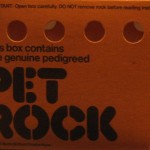 How Did The Pet Rock Fad Start?
How Did The Pet Rock Fad Start?
For all you pet owners out there, has there ever been a time when you’ve just had enough? Enough hairballs, enough grooming, enough messes, enough vet bills and the like? After listening to his friends complain about such things with their pets, Gary Dahl decided to take matters into his own hands and provide the world with the planet’s perfect pet: the Pet Rock. That’s right, folks. In 1975, the biggest fad was to dish over a whopping $3.95 ($17.58 today) to purchase one very ordinary rock. It wasn’t cute or cuddly. It wasn’t a beautiful piece of art. The rock didn’t even have a face! It was just, well, a rock. What would possess someone to pay for a rock that could probably be found in one’s own…(more)
 That Time Coca-Cola Tried to Sell Bottled Tap Water in the U.K. and the Hilarity that Ensued
That Time Coca-Cola Tried to Sell Bottled Tap Water in the U.K. and the Hilarity that Ensued
As literally one of the biggest companies on Earth, Coca-Cola has their giant fingers in a lot of equally giant pies. One of those fingers happens to be dipped in the extremely lucrative bottled water market. The product we’re talking about today is Dasani, which currently earns Coca-Cola just shy of one billion dollars per year in the United States, despite being a drink that is nothing but filtered tap water with sodium chloride (table salt), potassium chloride, and magnesium sulfate (Epsom salt) added. While Dasani sells exceptionally well in America, when the soda giant tried to market it in the UK, they not only insinuated in their official slogan that it was full of semen, but also accidentally introduced illegal amounts of a potential cancer causing substance during the filtration process. The result was disastrous for the company, likely costing them…(more)
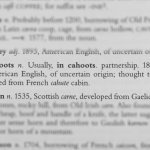 Why Do We Say Someone is “In Cahoots”?
Why Do We Say Someone is “In Cahoots”?
Meaning alternately companions, confederates, partners and/or conspirators, in cahoots is a phrase used to describe a situation where people are working together, often on an illegal, immoral, secret and/or unethical scheme. As for the word “cahoot” itself, it is defined as a “partnership, league.” The precise origin of in cahoots is not known, although there are a few very compelling theories. The first was floated in 1848 by John Russell Bartlett (no apparent relation to the quotations guy) in his Dictionary of Americanisms: CAHOOT. Probably from cohort, Spanish and French, defined in the old French and English Dictionary of Hollyband, 1593, as ‘a company, a band.’ It is used at the South and West to denote a company or union of men for a predatory excursion, and sometimes for partnership in business…(more)
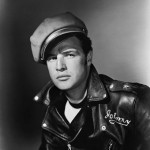 The Odd Eating Habits of Marlon Brando
The Odd Eating Habits of Marlon Brando
He is one of the most admired actors in the history of the movies. Marilyn Monroe called him “the sexiest man” she had ever seen. And if you watch his early, incredible performances in “On the Waterfront” (1954), “Streetcar Named Desire” (1951), “The Wild One” (1953), “The Men” (1950), and my favorite Brando film “Guys and Dolls” (1955), you can see an almost-perfectly proportioned, sleek-looking, brilliant actor. But even in these very early days of his movie career, the great Marlon liked his chow. Actor Richard Erdman, a fellow actor in “The Men” (Brando’s first film), says Marlon’s diet at the time consisted of “junk food, take out, and peanut butter”, which he consumed by the jarful. By the mid-fifties, Marlon had become renowned for eating boxes of Mallomars and Cinnamon Buns, and washing his sweet treats…(more)
Burritos are one of the most popular Tex-Mex items on the menu. Anyone who knows a little Spanish has probably raised their eyebrows at the name, however. In Spanish, a “burro” is a donkey, and “burrito,” the diminutive form, means “little donkey.” As far as we know, donkey was never a popular ingredient in the famous dish, so how exactly did it get its name? Turns out, there are quite a few stories about how the burrito name came to be and little in the way of documented evidence backing any of them. One of the most popular stories (likely false) is that a man named Juan Mendez from Chihuahua, Mexico used a donkey to carry around his supplies for his food cart. To keep the food warm, he would wrap it up in a big homemade flour tortilla. First appearing in the early 1900s, right around the time of the Mexican Revolution, this quick, easy food item quickly became…(more)
| Share the Knowledge! |
|

